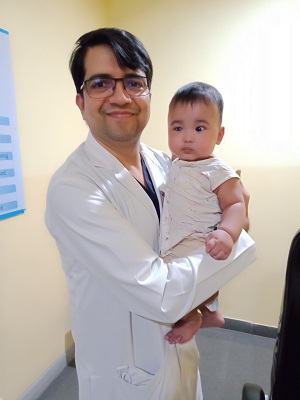In India, hundreds of children are born with a genetic condition called ‘Peters anomaly’ (PA), a rare, congenital disorder that leads to corneal opacities at birth. If untreated, it can leave a child without vision for the rest of their life.
The standard way to treat an eye affected by PA is a ‘full-thickness’ corneal transplant, a Penetrating Keratoplasty (PK). However, PK is a challenging and complex procedure which requires high-quality donor corneas. It has many post-operative challenges, and so it has only modest success.
A new paper by Dr Muralidhar Ramappa and others in the Ophthalmic & Physiological Optics presents evidence for a new surgical technique, “Selective Endothelialectomy in Peters Anomaly” (SEPA), as a viable alternative. In SEPA, only the abnormal region of the endothelium is selectively removed instead of a full transplant. The central idea of this approach is that once the abnormal layers are selectively removed, neighboring cells migrate or enlarge into the gap and restore visual function.
The paper reviews the surgical outcomes of 34 eyes of 28 children who underwent SEPA over eight years (2012-2019). 17 children (60.7%) were male, while a third had parental consanguinity. 29 eyes (85%) showed mild to moderate corneal clearing, indicating endothelial healing. Visual outcomes continue to improve in 32 eyes (94%) over time. This is strong evidence for the viability of this approach.
























